




42
95.95
Solid
Metallic gray
10.22 g/cm3
2.623 ºC
10,055

Molybdenum is a naturally occurring element found in the earth and is used for a wide variety of applications in transportation, construction, power generation, agriculture and even medicine. In small concentrations, molybdenum is also present in plants, animals and inside the human body, which means that life cannot be sustained without it.


Molybdenum has one of the highest melting temperatures of all the elements (2623°C) and is also one of the minerals with the lowest coefficient of thermal expansion (expansion), 5.04 x 10-6 (1/K).
Another of its most notable characteristics is its great resistance to corrosion, as it manages to maintain its composition stable at room temperature and up to 400°C. Likewise, it resists well in non-oxidizing media, non-oxidizing mineral acids and is relatively inert to media containing hydrogen sulfide. Other products to which it resists well are iodine, bromide and chloride vapors; and liquid metals such as bismuth, lithium, potassium and sodium. Its corrosion resistance can even be increased by forming alloys with tungsten and chromium.

Molybdenum has two types of uses: primary and final. In primary uses, it is mainly used as a material for the production of metallurgical applications -structural and stainless steels-, chemical applications and pure molybdenum parts. Final uses, meanwhile, refer to finished products containing various percentages of molybdenum, which are used in the production of parts for industries such as the oil, chemical, automotive and aeronautical industries, among others.

The properties of this mineral play a key role in durability, strength and the delivery of other relevant characteristics for Molybdenum-derived products. For example, in stainless steels, Molybdenum multiplies the stainless effect of chromium, especially in products or constructions with high exposure to moisture, chlorine or salt. Stainless steels with Molybdenum content extend the useful life of constructions and reduce repair costs due to corrosion, cracks or other failures. Molybdenum is used in other types of structural steels to provide greater hardness and resistance to temperature and weldability of the parts. Mining, meanwhile, uses these products in its machinery because of the large amount of hard and abrasive compounds they face when excavating the earth and processing minerals.
But the use of Molybdenum is even broader. Its applications also extend to lighting, electronics, lubricants, pigments, among other products; and new Molybdenum and rhenium alloys are being developed for applications in prostheses and medical implants.
Email us and our team will get in touch with you to answer your queries.
Find out more